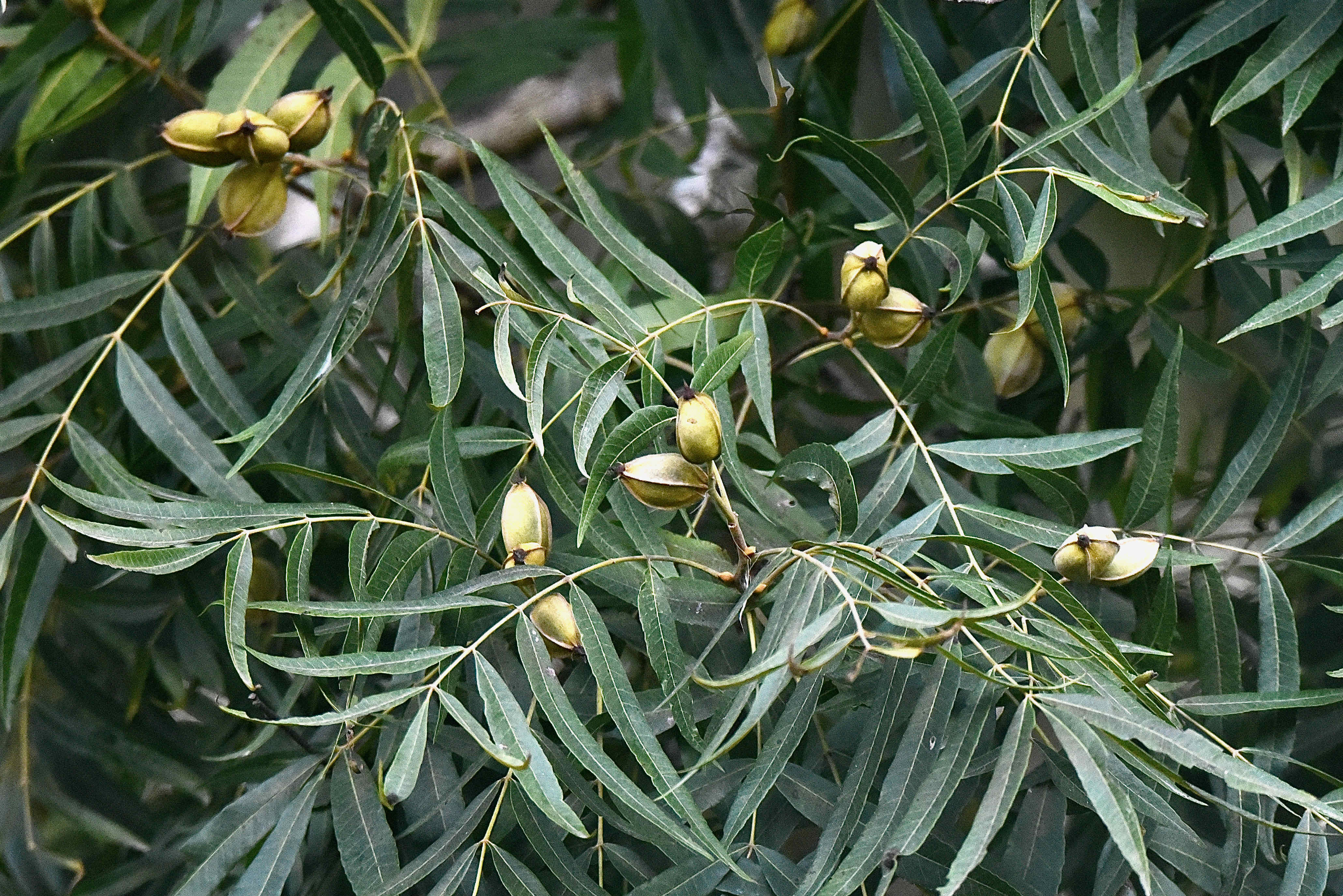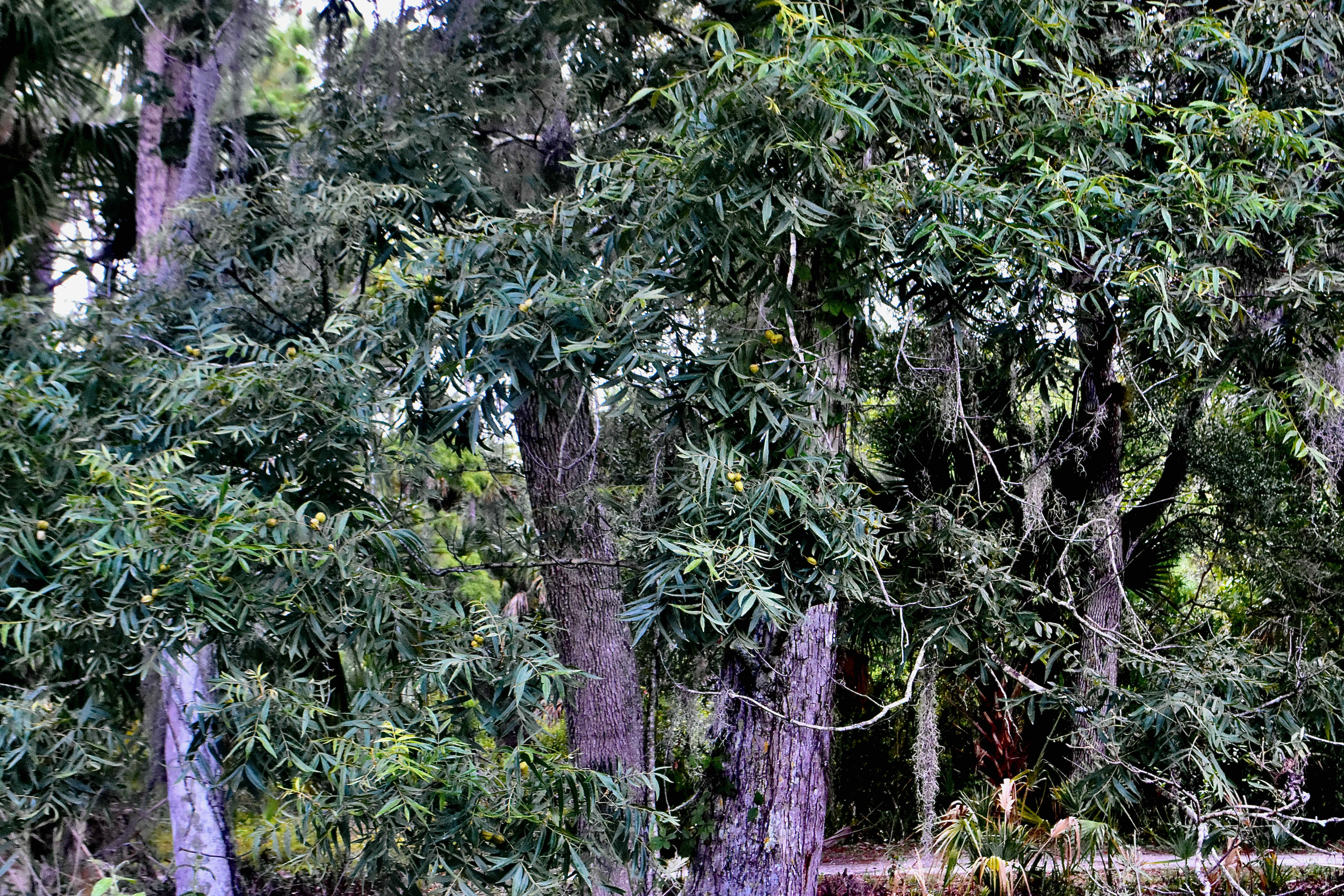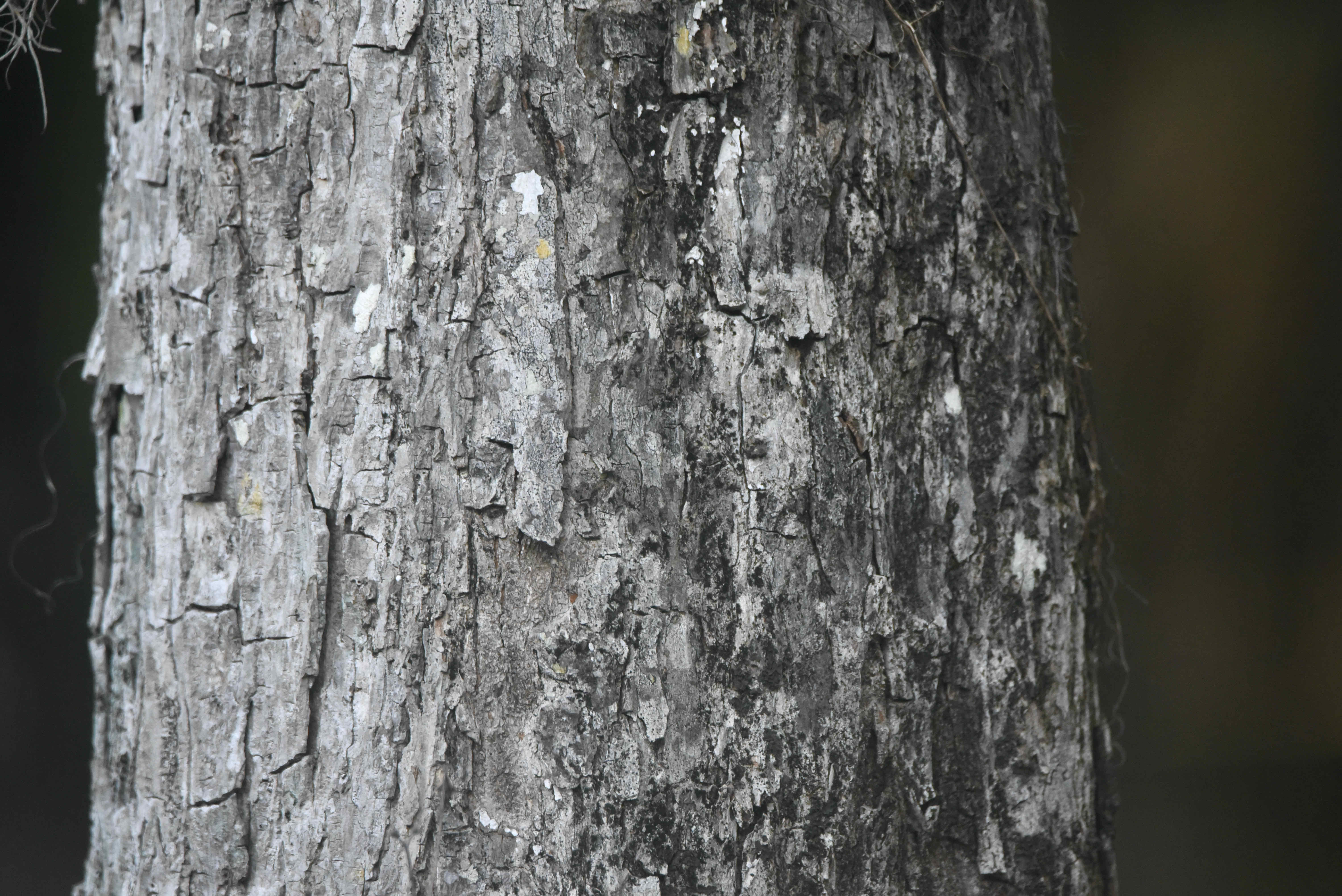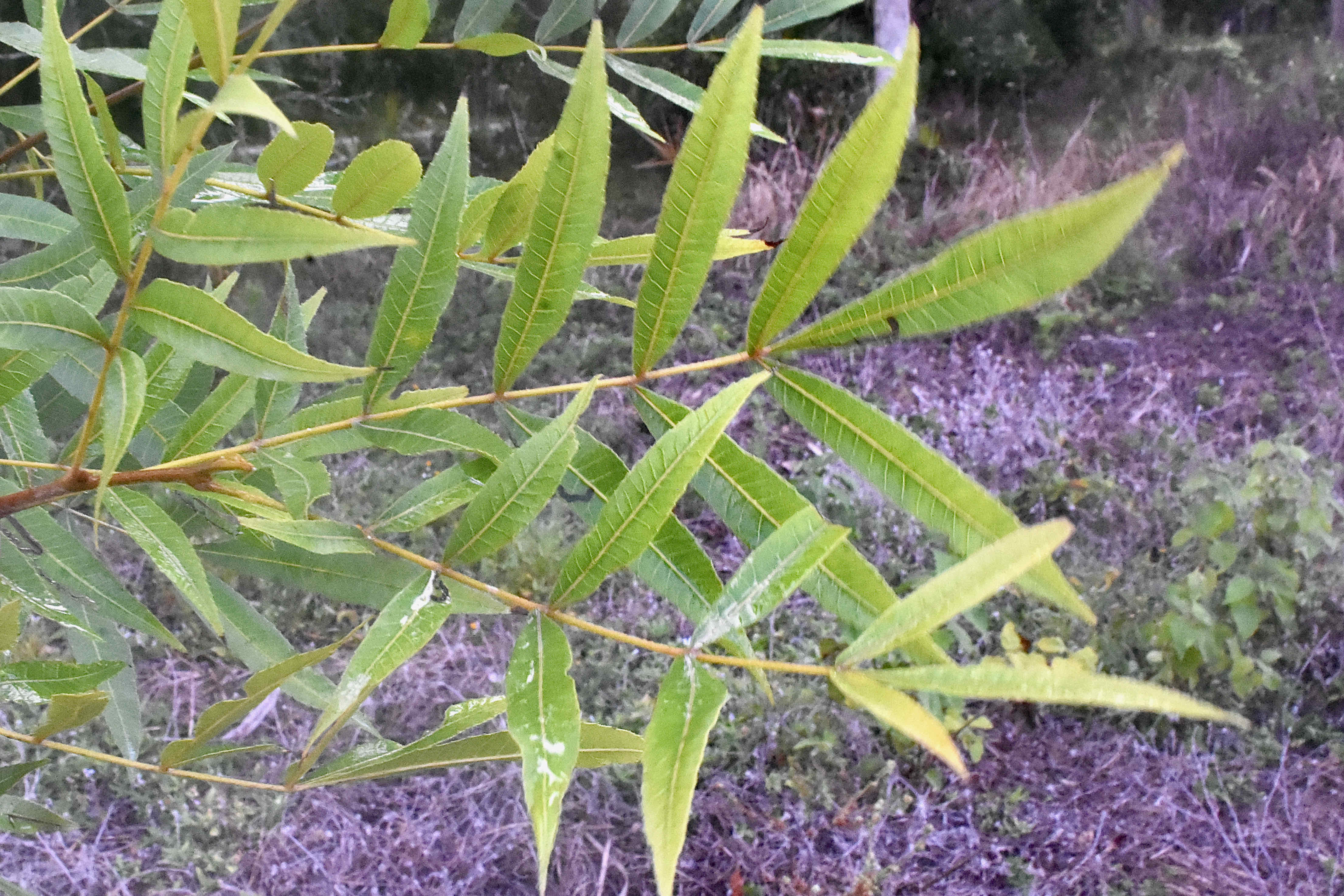
Water Hickory, photographed at Riverbend County Park, Jupiter, Palm Beach County, in June 2021.
There’s seemingly an endless list of common names for Carya Aquatica, and all of them tell you one of two things: it has an affinity for water, and that its pecan-like nuts don’t taste much at all like the pecans used to make tasty treats like pecan pie. In fact they’re best described as inedible.
Probably the most common of the common names for C aquaticais water hickory, and it does grow in very wet places, like stream banks, flood plains and bayous, where its presence plays a key role in cleaning water as it drains through the watershed.
And it can be absolutely huge — the national champion water hickory stands 150 feet tall. It can regularly top 115 feet, but in South Florida, it typically stands a more modest 25 to 50 feet in the air.
Its natural range in Florida extends from the Panhandle south to about Palm Beach County, vouchered, or scientifically confirmed, in about two-thirds of the state’s 67 counties. Water hickory grows as far north as southern Illinois and Virginia, and as far west as Texas and Oklahoma.
Water hickory is a rare tree in our neck of the woods. The Institute for Regional Conservation, based in Delray Beach, considers water hickory “imperiled” within South Florida, but it is more common in other parts of the state. It is not listed as either threatened or endangered by any government agency within its range, including Florida.
Water hickory is an upright tree with a single trunk and a narrow crown. The general effect of the tree is sort of vase shaped. The leaves are large and compound, with between four and eight pairs of leaflets and a single terminal leaflet. Leaves are between nine and 15 inches long; leaflets are three to 10 inches long, lance-shaped and can be finely serrated along the edges. The tops are dark green, the undersides are paler, and there can be a few hairs along the veins.
The bark is light gray to brown, coarse and what we’d call flaky. The trunk can be two feet in diameter. Water hickory has separate male and female flowers, greenish in color and blooming in spring. The males grow in clusters called catkins; two to 10 females grow along a short stock along the same branches as the males. Neither are what you’d call showy. Water hickory is wind-pollinated and potentially a problem for those prone to allergies.
As might be expected given the name, water hickory’s fruit is a nut (also called a pecan) light brown in color, one or two inches long, four angled ridges and rough to the touch. It is related to the tree we typically think of when we hear pecan, Carya illinoinensis, but water hickory’s seed is bitter to the point of being inedible.
Water hickory wood has few uses for us. Hickories generally are among the hardest and strongest woods native to North America, but water hickory is less stable than other hickory species and not used as lumber. It’s also difficult to work with, tearing while being worked if tools are not kept sharp.
But it does have a high energy content, and is often used to fuel wood stoves and processed into charcoal for cooking and smoking meats.
Water hickory is also used as a shade or canopy tree in wet areas. Despite its affinity for water, it can withstand periods of drought.
Native Americans, the Cherokee in particular, used hickories medicinally, but we couldn’t find references specifically to water hickory being used.
In the natural scheme of things, water hickory provides plenty of cover for birds and other animals. Some ducks have been known to eat the seeds. It is the larval host for the luna, funeral dagger, and giant regal moths. Its extensive roots helps clean water as it flows down from upland places through the floodplain into the stream below.
As we said at the top, there is no shortage of common names for this tree. A few of them: bitter water hickory, swamp hickory, bitter pecan, bitter hickory, water pignut and water pignut hickory. It is a member of Juglandaceae, the walnut family.



